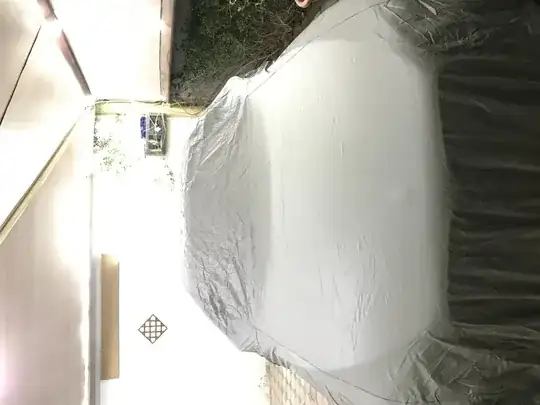The last thing you want to do is have someone drive your car every few weeks. What's important is that the last time you drove your car before putting it to sleep for five months is that you drove at least 15-18 miles on the highway, long enough to get the oil hot enough to stave off water vapor/condensation, which forms carbonic acid, sludge, varnish. An old mechanic's test was to place your hand on the bottom of your oil pan (sump). If too hot to keep there more'n a fraction of a second, you're A-OK for the duration.
While still warm, put a plastic bag secured by rubber band around the end of your exhaust pipe(s). Either disconnect your battery, or better still, install a good quality battery disconnect switch. Just make sure it's rated for more amps than your starter draws. I used & use a Cole Hersee switch, which i bought from our local NAPA auto parts store in my Packards.
A Chevron engineer told us any gasoline (any brand, it's all like aspirin) should be good for at least a year if it is stored where the temperature remains below 80 degrees. A friend had fully two-year-old gas in one of his Delahayes and it started right up, ran fine. I do use Stabil as precaution, and have heard that marine Stabil even better, but have read no vetted tech papers on that.
The regular type antifreeze goes bad, becomes acidic after two or three years, so if you absolutely must use antifreeze, make sure your change it no longer than every third year. You need antifreeze only if your car will suffer a hard freeze, or if it has air conditioning, in which case you need 15% antifreeze just to protect the heater core from freeing even in August in LA or Phoenix. Don't use distilled water, which is ion hungry and leaches minerals ---like lead, tin, solder from your radiator. Just use soft water and a good quality rust and corrosion inhibitor. I like No-Rosion, tho' Red Line's product is also good.
A late friend's '54 Ferrari Testarossa sat seven months between vintage races with no ill effects and he didn't jack his car up while in storage.
The Nethercutt Collection in California drives each car in their collection just twice a year, every six months.
You might want to consider DOT-5 silicon brake fluid in any car you really care about, since this product is non-hydroscopic, does not absorb moisture from the ambient air, which is what corrodes master and wheel cylinders.
If you or someone responsible is around in your absence, it doesn't hurt to rock the car up and down a few times every few weeks, perhaps tap the brake pedal a few times, but these two items are optional, and we're now getting into "Zen and the Art of Hibernating Car Maintenance."
Since your car's garaged and covered, you don't have to worry about UV rays and heat degrading your tires. Have never understood people extolling "heated garages." Heat exacerbates any chemical reaction, like rust. If you're going to drive a nice car in cold, dry weather, an unheated garage but a block heater for the engine, or a high temperature lamp(s) under the radiator and sump sound like a better idea.
 Just would like to add that new car production need more take care from old car due the technical and sensore i had store my car BMW 750Li 2015 for 17 months now without any issue as i had started every 6 month for half hour trip and again i parked for other 6 month
Just would like to add that new car production need more take care from old car due the technical and sensore i had store my car BMW 750Li 2015 for 17 months now without any issue as i had started every 6 month for half hour trip and again i parked for other 6 month